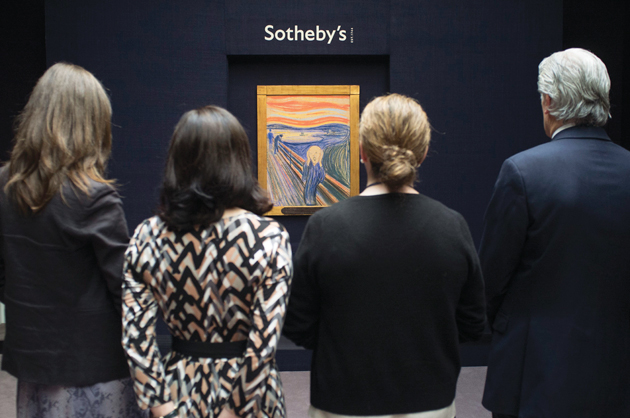When a backed-up sewer pipe flooded his basement nine years ago, Aaron LaPedis took a good look at his fine art insurance policy. That is when the collector and gallery owner discovered that the mishap was not covered. He lacked a specific rider and would take a $5,000 loss on the limited-edition piece. “It was something given to me a long time ago that can never be replaced,” said LaPedis, owner of Fascination St. Fine Art in Denver. “I can’t blame anybody but myself.”
Buoyed in part by wealthy investors seeking to diversify their assets, art sales bounced back to pre-recession levels in 2010 and 2011, according to a report by ACE Private Risk Services. In one of the surest signs of a healthy art market, Edvard Munch’s “The Scream” sold for $120 million in May, setting an art auction record. “The art market appears to be outperforming the equities market and other investments,” said Andrew Gristina, national fine art practice leader at Travelers Insurance.
But, the ACE survey found, many collectors fall short when protecting their art. Once a work is obtained, Gristina said, the long-term investment becomes “about the preservation of that work for the future.” Many people buying art have made money through investments. “When they’re buying art, it stands to reason that they should carry this business acumen into the art world,” said Gristina, adding that “good insurance is critical.” Insurance agents can help new or potential art owners assess their exposures to risks, such as loss or damage.
Buying online might be a good option for a new art investor. With just a few keystrokes, an artist’s entire portfolio is at the buyer’s fingertips. But purchasing art online can be risky since you may not know exactly what you are purchasing, said Mary Sheridan, assistant fine art manager at Chubb Personal Insurance. To steer clear of internet scams, Sheridan suggests buyers find out where the art is coming from, read the conditions of sale and get a second opinion, if possible. The reputation of the seller—and its claims—should be assessed prior to purchase.
Once art is purchased, experts recommend that new investors choose a fine art insurance policy and resist the urge to include the piece on a personal property policy. Most property policies have high deductibles, which would render insurance unnecessary if the art was less expensive, and ceiling amounts that could limit an art investor’s potential payout on a costly piece. A separate fine art policy will insure the piece to its specific value, said Gristina, and give the collector access to specialized fine art claims personnel and investigators. To avoid LaPedis’ mishap, ask exactly what types of damage or loss are covered.
After acquiring insurance, the next step is to decide how to display and care for the art investment. According to LaPedis, art should be kept in a climate-controlled building that stays between 50 and 75 degrees Fahrenheit.
But Sheridan cautions clients to consider the risks to the piece before storing or displaying it. “I don’t like it when someone puts it in a closet in a big, old Hefty bag,” said Sheridan. Art also should not be hung over a fireplace or underneath a bathroom, where it could be drenched by a burst pipe. And whether the piece is a 300-pound painting or an outdoor sculpture, properly anchoring the piece will help it stay in place.
Another issue that can increase risk is one that may not initially seem like a problem at all: Many collectors have more art than they can display. When considering storage, collectors should look for facilities that specialize in fine art. The costs are not much higher than regular storage, and they come with the added benefits of handlers and climate control.
Even more important is moving art safely. “Transit is the greatest exposure we face as an insurer,” said Gristina. But, he added, the incidence of damage is greatly reduced when using specialty fine art shippers.
Sometimes collectors are asked to loan their works to museums—an honor that comes with its own set of risks. “The power of a good loan agreement is really important,” said Gristina. The agreement should state how the work will be shipped and handled, and who is responsible for the piece and its insurance. Condition reports on the art should be provided before and after the loan, said Sheridan.
Finally, it is important for collectors to update art appraisals and insurance policies every few years. Documents, such as photographs of the art and certificates of authenticity, should be stored in a safe deposit box or other secure location in case of an emergency.

